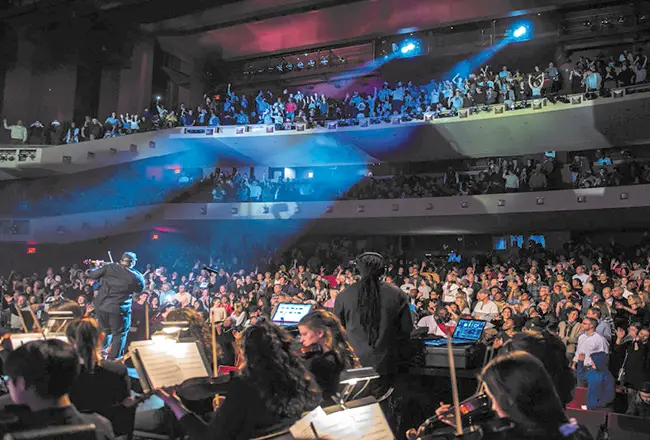Social distancing, the process by which people are kept further apart than usual to help stop the spread of the COVID-19 virus first became part of the common lexicon when Gov. Andrew M. Cuomo announced the imposition of requirements for theaters, concert halls, houses of worship and any place in New York state that had an occupancy limit.
That came before the mandated closing of restaurants, bars, movie theaters, fitness centers and casinos. Originally, if a facility had a posted occupancy limit of up to 499 people, it could still operate but with the occupancy cut in half. Gatherings of 500 or more people were prohibited.
Movie theaters along with live theaters and performing arts centers in Westchester either adapted to the new requirement or decided to cancel schedules. Those that continued operating with reduced capacity kept the seats on each side of a patron vacant.

Showcase Cinemas, owned by National Amusements in Auburn, Massachusetts, had advised the Business Journal that at its multiplex in the City Center in downtown White Plains the shows would go on and its staff would be cleaning seats, armrests, railings and other surfaces during extended intermissions between shows in addition to performing more frequent cleaning of other areas of the facility.
The Jacob Burns Film Center in Pleasantville canceled all of its showings, as did the Alamo Drafthouse Cinema in Yonkers.
The Westchester Broadway Theatre, which for 45 years has presented a package of Broadway-caliber shows and dinner at its facility in Elmsford, announced that it will remain closed at least through April 14.
The Performing Arts Center (PAC) at Purchase College also closed.
“We ”¦ canceled all ticketed public gatherings for the rest of the spring semester as most of our counterparts have done,” Seth Soloway, director of the PAC, told the Business Journal. “This takes us through the end of May. We”™ll see where this goes.”
The PAC has four theaters, including the 1,372-seat concert hall; the 713-seat PepsiCo Theatre; a 552-seat recital hall; and a flexible black box theater space that can seat up to 500.
Soloway is hoping that at the end of May they”™ll be able to resume normal activity at the PAC.
He said the center was having a highly successful season, both artistically and economically. He expressed concern that not only would the PAC”™s revenues be impacted, but so would the incomes of performing artists, talent agents and their staffs. He said those who had contracts to perform were cooperative when told that the PAC would have to close its doors.
He was optimistic that, over time, the PAC could make up for the loss of funds.
“I think it”™s going to be a widespread need to work together as a Westchester arts community to recover because it”™s going to hit everybody, big and small. I”™m worried about my colleagues in smaller institutions. I”™m worried about the artists and I”™m worried about my agent colleagues,” he said.
At the 843-seat Tarrytown Music Hall, executive director Bjorn Olsson at first thought about the possibility of putting on shows but limiting the audience size to under 500 when that was still allowed, but realized it would not be a smart move. The theater is owned and operated by a nonprofit, The Friends of the Mozartina Musical Arts Conservatory.
He said the Music Hall has an educational department, which among other programs does a residency in the Tarrytown schools. With Westchester schools being closed, the organization was taking another hit.
“It actually makes it easier when it”™s a government decree because it puts everyone on the same playing field,” Olsson told the Business Journal.
“There was obviously no time frame attached to the governor”™s statement. It just says, ”˜the foreseeable future.”™ I can foresee a lot of future. Does that mean three or four weeks? Does that mean three or four months or a year? We don”™t know,” Olsson said. “We pull in thousands of people for the Tarrytown downtown that has an amazing Main Street with a variety of restaurants and shops. The economic engine effect of cultural life as a whole is much bigger than people generally realize. This will hurt.
“Most of our revenue comes from our shows, so that”™s the biggest piece of it. If this goes on we will likely try to reach out to our sponsors and supporters to see if they can help us make sure that there will be a Music Hall at the other end of it. It”™s not just theaters. It”™s arts organizations in general. We all live on a pretty slim margin to begin with.”





















